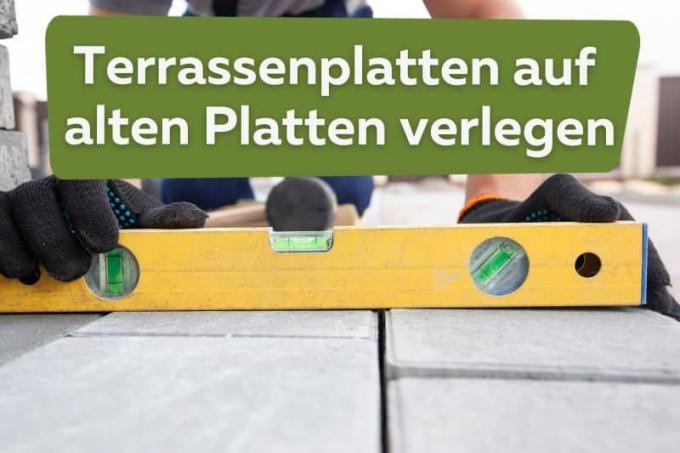
Beautifying and renewing the terrace is possible in many ways. Using old slabs as a base and foundation for laying new terrace slabs offers convincing advantages. This guide shows how to do it.
In a nutshell
- Preparation is key
- Using old terrace slabs is an advantage
- significant cost savings
- different materials possible
- note border
Table of Contents
- preparation
- Wooden tiles with click system
- wooden floorboards
- Concrete slabs and rubber bearings
- Fix stone slabs
- terrace edging
- frequently asked Questions
preparation
Before the old patio slabs or a concrete patio can be used as a base, cleanliness and stability are crucial.
The following steps are important for this:
- dry cleaning by sweeping
- remove stubborn residues with Kärcher or sandblaster
- repair damage
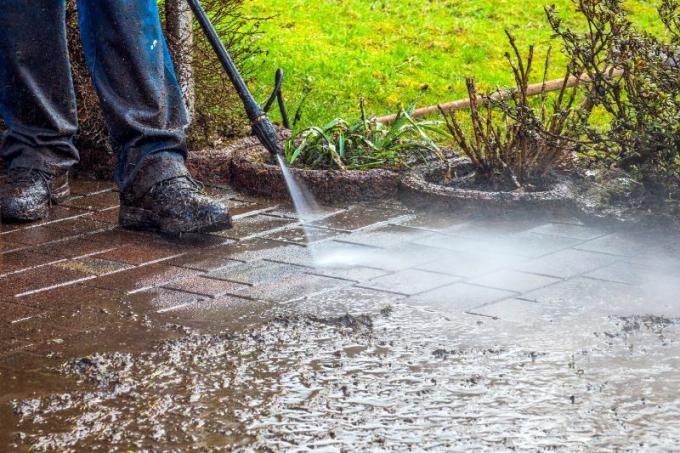
The surface must be clean, dry and intact. Otherwise the required resilience is not given. Holes and cracks must therefore be leveled out in advance.
Tip: The old terrace slabs must be level. Otherwise, more complex work is required for spot compensation, which is better carried out professionally.
Wooden tiles with click system
Wooden tiles with a click system are one of the easiest ways to cover terrace slabs and use them as a base. They bring a number of advantages:
- easy installation and removal
- inexpensive purchase
- numerous variants available
- light weight
- easy to edit
- ideal for rental properties
- low expenditure of time
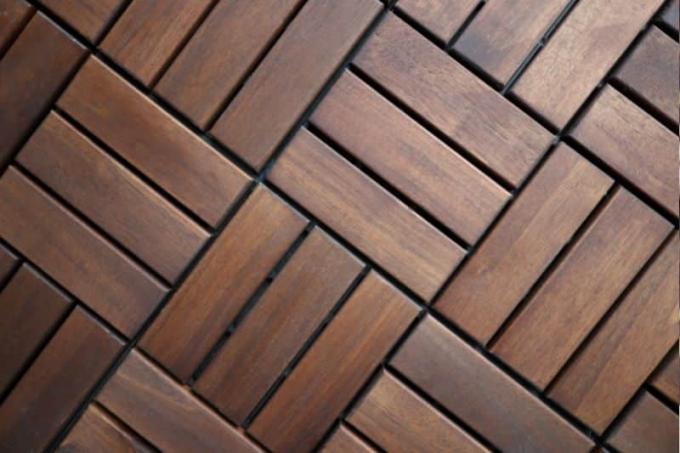
They also offer a pleasant walking experience and promote good water drainage. This prevents damage.
For the laying it is only necessary to connect the plastic frames under the tiles. This work can easily be done alone. A fixed connection to the ground is not required.
wooden floorboards
Wooden floorboards can be laid instead of new panels. For these, spacers or a underframe. Both constructions are to be fixed to the existing terrace slabs or the concrete. Appropriate screws are available for this.
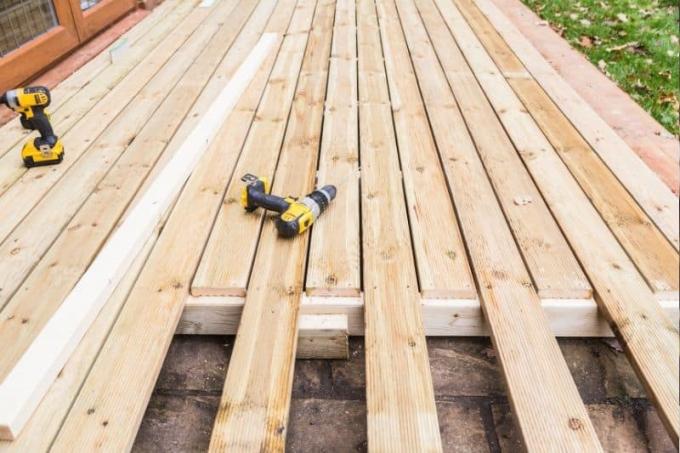
The resulting distance to the new surface mainly fulfills three functions:
- improved water drainage
- Compensation for unevenness
- increase in stability
However, with this variant the effort is significantly higher compared to a click system. This applies both to the work steps and to the necessary time, the material and the associated costs.
For rented properties, firmly screwed wooden floorboards are also only recommended to a limited extent, as removal is more difficult.
Concrete slabs and rubber bearings
New patio slabs made of concrete or stone can be laid on old slabs without time-consuming installation thanks to rubber bearings. They can be cut to size if necessary and thus easily adapted to the dimensions of the existing terrace.
Other advantages are:
- good water drainage through joints
- no structural changes
- no tools required
- easy removal
- Stability due to high weight

All that is required for laying is the panels themselves and rubber bearings with a cross joint. The corners are inserted into the recesses and thus fixed. If they have to be removed again or if it is necessary to clean the old surface again later, they can simply be lifted out.
Fix stone slabs
Cement can be used to firmly attach new terrace slabs to the old substructure. However, the effort involved here is considerable and is as follows:
- Thoroughly clean the surface, let it dry and level out any damage.
- Apply deep primer to improve absorbency and adhesion.
- Apply cement as a thin layer and spread evenly. level out any unevenness.
- Place the plates on top and press down evenly. Pay attention to a straight alignment and joints between the individual elements.

This variant may initially appear to be more stable and durable. However, there are disadvantages that should not be underestimated. These include:
- increased effort
- difficult water drainage
- greater vulnerability to damage
- high weight
- Removal associated with great effort
It also makes sense to have the work done. This in turn increases costs.
terrace edging
If new terrace slabs are laid on top of old ones, the edging needs to be adjusted. This is necessary for various reasons. These include:
- optically harmonious design
- Avoiding pitfalls
- higher resilience
- Slipping is prevented
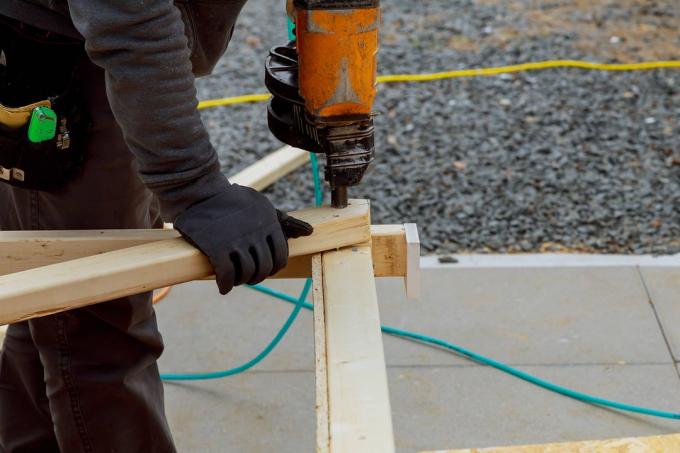
The frame can take different forms. With light and low wooden tiles, for example, a simple wooden frame that does not have to be fixed in place is sufficient.
With other variants, only an adjustment must be made. This can be designed decoratively and can serve as a contrast or be a harmonious conclusion. If the stone slabs are fixed or wooden floorboards are screwed tight, such a frame is not absolutely necessary.
frequently asked Questions
Stone is more complex to assemble, but is easier to care for and more resistant in the long term. Wood often creates a cozier impression, but has a shorter lifespan.
On the one hand, there is no need to remove the old plates, which is associated with a great deal of time, work and money. On the other hand, a clear visual improvement can be achieved quickly, for example, with wooden tiles.
Laying out wooden tiles with the click system is easy and can easily be done on your own. With stone slabs, the weight can already be difficult due to transport and carrying. Help is required here or professional implementation is recommended.



